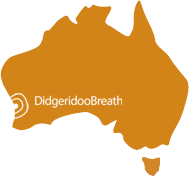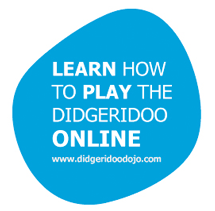There are many different Aboriginal names for the instrument, primarily because there are so many different language groups amongst the Aboriginal people.
In T.B. Wilson’s Narrative of a Voyage Round the World (1835), there is a drawing of an Aboriginal man from Raffles Bay, Coburg Peninsula, playing the instrument. Observations made at Raffles Bay, describe the instrument as being about 3 feet long and made of bamboo. Names obtained were eboro, ebero and ebroo.
According to Prof Trevor Jones, (Monash University) there are at least 45 different synonyms for the didgeridoo. Some are bambu, bombo, kambu, pampuu, (may reflect didgeridoo origins from bamboo), garnbak, illpirra, martba, Jiragi, Yiraki, Yidaki, (seem close dialectically and which means “bamoo” although no longer commonly made from bamboo).
Just Some of the many tribal group names for the didgeridoo…
| Tribal Group | Region | Name for Didgeridoo |
| Yolngu | Arnhem Land | yidaki |
| Anindilyakwa | Groote Eylandt | ngarrriralkpwina = play didge |
| Gupapuygu | Arnhem Land | yiraka = trachea, windpipe |
| Djinang | Arnhem Land | rirtakki |
| Iwaidja | Cobourg Peninsula | wuyimba = trachea |
| Jawoyn | Katherine | artawirr = hollow log |
| Gagudju | Kakadu | garnbak |
| Lardil | Mornington Island | djibolu |
| Ngarluma | Roebourne | kurmur |
| Nyul Nyul | Kimberleys, WA | ngaribi = bamboo |
| Warray | Adelaide River | bambu = used for singing |
| Mayali | Alligator River | martba |
| Pintupi | Central Australia | paampu |
| Arrernte | Alice Springs | ilpirra |
The following list shows the names for the
instrument in the various Maningrida region languages:
Kunwinjku, Kune, Kuninjku – mako (pronounced ‘margo’)
Rembarrnga – liddung, djalubbu
Burarra, Gun-nartpa – ngorla
Dangbon, Dalabon – morlo
Djinang, Wurlaki – wuyimbarl
Ndjebbana (the language of the Kunib’dji people) – ngalidjbinja
Nakkara – ngunebobanja
Gurrgoni – mudburuja
Gundjeihmi (and also Kune) – morle






